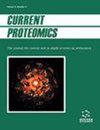The Relationship of Transposable Elements with Non-Coding RNAs in the Emergence of Human Proteins and Peptides
IF 0.5
4区 生物学
Q4 BIOCHEMICAL RESEARCH METHODS
引用次数: 0
Abstract
Transposable elements are the oldest structural and functional units that were formed during the emergence of life on Earth. The most ancient properties of transposable elements are the multifunctionality of their transcription and translation products and the formation of their many variants through processing, due to which transposable elements are key evolutionary sources of long non-coding RNAs, circular RNAs, microRNAs, proteins and peptides formation. Moreover, the same type of transposon can simultaneously serve as the source of the origin of all these molecules, providing the adaptive properties of living organisms, especially complex eukaryotes, including humans. The ancient ability of transposable elements for mutual integration due to their protein products interacting with DNA and RNA molecules, as well as for mutual regulation due to the functionality of their RNA, is the basis for the origin of many proteins and non-coding RNAs characterized by the same properties. This can explain the emergence of transcription factors from transposable elements, that is, proteins capable of interacting with the structures of DNA molecules due to the presence of specific amino acid sequences derived from transposable elements. This article presents facts about the origin during the evolution of many protein and non-- coding RNA genes from transposable elements. Specific proteins and peptides translated from long non-coding RNAs, pri-microRNAs and circular RNAs are described, which reflect the origin of non-coding RNAs from transposable elements in evolution. These proteins and peptides are promising tools for the treatment of viral infections and drug-resistant tumors, since, together with non-coding RNAs, they are involved in antiviral and antitumor responses.可转座元件与非编码 RNA 在人类蛋白质和多肽出现过程中的关系
可转座元件是地球生命出现过程中形成的最古老的结构和功能单元。可转座元件最古老的特性是其转录和翻译产物的多功能性以及通过加工形成的多种变体,因此,可转座元件是长非编码 RNA、环状 RNA、microRNA、蛋白质和肽形成的关键进化源。此外,同一类型的转座子可以同时作为所有这些分子的起源,为生物体,尤其是包括人类在内的复杂真核生物提供适应特性。转座子因其蛋白质产物与 DNA 和 RNA 分子相互作用而具有相互整合的古老能力,也因其 RNA 的功能而具有相互调控的能力,这是许多具有相同特性的蛋白质和非编码 RNA 的起源基础。这可以解释转录因子从可转座元件中产生的原因,即由于存在来自可转座元件的特定氨基酸序列而能够与 DNA 分子结构相互作用的蛋白质。本文介绍了许多蛋白质和非编码RNA基因在进化过程中源自转座元件的事实。文章描述了由长非编码RNA、前微RNA和环状RNA翻译而来的特定蛋白质和肽,反映了非编码RNA在进化过程中起源于转座元件。这些蛋白质和肽是治疗病毒感染和耐药性肿瘤的有前途的工具,因为它们与非编码 RNA 一起参与了抗病毒和抗肿瘤反应。
本文章由计算机程序翻译,如有差异,请以英文原文为准。
求助全文
约1分钟内获得全文
求助全文
来源期刊

Current Proteomics
BIOCHEMICAL RESEARCH METHODS-BIOCHEMISTRY & MOLECULAR BIOLOGY
CiteScore
1.60
自引率
0.00%
发文量
25
审稿时长
>0 weeks
期刊介绍:
Research in the emerging field of proteomics is growing at an extremely rapid rate. The principal aim of Current Proteomics is to publish well-timed in-depth/mini review articles in this fast-expanding area on topics relevant and significant to the development of proteomics. Current Proteomics is an essential journal for everyone involved in proteomics and related fields in both academia and industry.
Current Proteomics publishes in-depth/mini review articles in all aspects of the fast-expanding field of proteomics. All areas of proteomics are covered together with the methodology, software, databases, technological advances and applications of proteomics, including functional proteomics. Diverse technologies covered include but are not limited to:
Protein separation and characterization techniques
2-D gel electrophoresis and image analysis
Techniques for protein expression profiling including mass spectrometry-based methods and algorithms for correlative database searching
Determination of co-translational and post- translational modification of proteins
Protein/peptide microarrays
Biomolecular interaction analysis
Analysis of protein complexes
Yeast two-hybrid projects
Protein-protein interaction (protein interactome) pathways and cell signaling networks
Systems biology
Proteome informatics (bioinformatics)
Knowledge integration and management tools
High-throughput protein structural studies (using mass spectrometry, nuclear magnetic resonance and X-ray crystallography)
High-throughput computational methods for protein 3-D structure as well as function determination
Robotics, nanotechnology, and microfluidics.
 求助内容:
求助内容: 应助结果提醒方式:
应助结果提醒方式:


